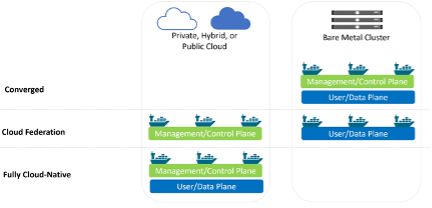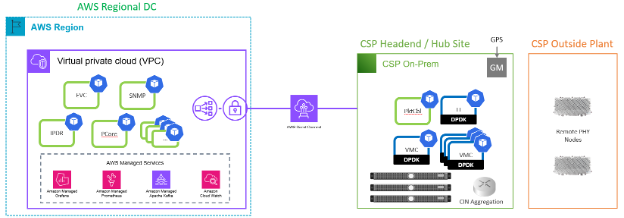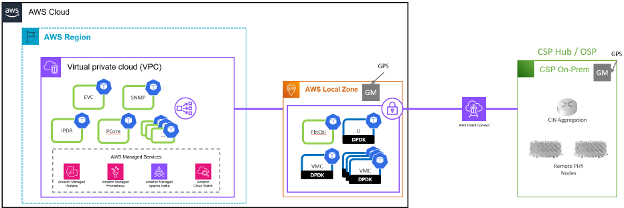
As broadband demand continues to grow, cable operators are under increasing pressure to expand their network capacity while maintaining high performance and efficiency. Traditionally, CMTS (Cable Modem Termination System) infrastructure has been run on-premises, relying heavily on dedicated hardware. However, with the shift towards cloud-native technologies and virtualized solutions, operators now have a game-changing opportunity to rethink how they deploy DOCSIS services.
Through a collaborative effort between Vecima Networks and AWS, the Entra vCMTS has been successfully trialed in the Cloud, offering operators the flexibility to choose from multiple deployment models that suit their specific needs. The Entra vCMTS supports three deployment models: Converged, Cloud Federation, and Cloud Native, with the latter two demonstrating the immense potential of cloud-based vCMTS deployments.

Let’s dive into these deployment models, focusing on the cloud-based options and how they empower operators to modernize their DOCSIS infrastructure in an agile, scalable, and cost-effective way.
Converged: Traditional On-Premises Model
In the Converged model, both the Entra Virtual Controller (EVC)—which manages the control and management plane—and the Virtual MAC Core (VMC)—which handles DOCSIS data plane processing—are deployed on-premises. This model represents the traditional approach of deploying all vCMTS components within the operator’s premises, offering complete control over the hardware and infrastructure. While this model ensures high performance, it requires significant investment in on-premises hardware and ongoing operational costs related to maintenance and upgrades.
Cloud Federation: Hybrid Agility and Flexibility

The Cloud Federation model introduces a hybrid deployment approach, where the EVC is hosted in AWS and the VMC remains on-premises. This configuration provides cable operators with the flexibility of cloud-native management while keeping the data plane processing close to their physical infrastructure.
By moving the EVC to AWS, operators can harness the cloud’s scalability, pay-as-you-go pricing, and access to advanced AWS services such as data analytics, machine learning, and enhanced security. This not only simplifies network management but also allows operators to rapidly deploy new features and updates without the need for extensive on-site hardware. AWS’s global infrastructure ensures that the EVC can dynamically scale based on network deployments, reducing capital expenditures and enabling automatic disaster recovery.
In the Cloud Federation model, the VMC remains on-premises to handle high-throughput DOCSIS data processing. This hybrid setup allows operators to maintain low-latency data delivery while benefiting from AWS’s powerful orchestration tools. By utilizing services such as AWS Direct Connect, operators can establish a low-latency, highly secure connection between the cloud-hosted EVC and the on-premises VMC, ensuring seamless integration and optimal performance.
For operators looking to balance cloud advantages with existing on-premises investments, the Cloud Federation model offers the best of both worlds: cloud-native management and control, paired with on-site data plane processing for latency-sensitive applications.
Cloud Native: Fully Cloud-Integrated DOCSIS Services

The Cloud Native model represents the future of flexible vCMTS deployments, where both the EVC and VMC are fully hosted in AWS. This approach allows cable operators to take full advantage of the cloud, eliminating the need for on-premises hardware for DOCSIS data plane processing and drastically reducing capital expenditures.
In this model, the EVC is deployed in an AWS Region, leveraging AWS’s vast global infrastructure to handle management and control operations. Meanwhile, the VMC is deployed in an AWS Local Zone or AWS Outpost, allowing the data plane to be processed closer to end-users, thereby minimizing latency. AWS Local Zones provide single-digit millisecond latency, ideal for most DOCSIS applications, while AWS Outposts offer near on-premises performance for operators requiring low latency.
Cloud Native Entra vCMTS deployments also address the technical challenges of data processing, encryption, and timing synchronization. AWS supports instance types equipped with Intel Xeon N-class processors featuring QuickAssist Technology (QAT) and Data Plane Development Kit (DPDK), which accelerates DOCSIS packet processing, encryption, and decryption. Additionally, AWS offers Precision Timing Protocol (PTP) support in Local Zones and Outposts equipped with GPS, ensuring the VMC and Remote PHY Devices (RPDs) remain synchronized. These features allow the fully cloud-native Entra vCMTS to deliver the high performance required for modern broadband networks.
Why Choose a Cloud-Integrated Entra vCMTS?
While the on-premises Converged deployment model is expected to be the widest deployed, the cloud-based deployment models for Entra vCMTS—whether Cloud Federation or Cloud Native—offers some interesting benefits over traditional on-premises solutions:
- Scalability: AWS allows operators to scale their Entra vCMTS resources dynamically and without a procurement and install cycle. Whether you need to handle a temporary surge in network traffic or expand long-term capacity, AWS’s elasticity ensures your network can grow without over-provisioning or large upfront investments.
- Cost Efficiency: With AWS’s pay-as-you-go pricing, operators only pay for the resources they use. This dramatically reduces capital expenditures, eliminating the need for expensive on-premises hardware, and minimizes operational expenses by offloading infrastructure management to the cloud.
- Disaster Recovery and High Availability: AWS’s global infrastructure offers automatic disaster recovery and high availability across multiple Availability Zones and Regions. Operators can deploy vCMTS components with built-in redundancy, ensuring uninterrupted service in the event of a failure.
- Agility and Innovation: By leveraging AWS’s managed services—such as machine learning, data analytics, and automated updates—operators can accelerate the deployment of new features and services. This agility provides a competitive edge, allowing operators to quickly adapt to customer needs and market demands.
- Global Reach with Low Latency: AWS’s vast network of Regions, Local Zones, and Outposts allows operators to deploy vCMTS components closer to their users, ensuring low-latency service delivery. Whether you need to serve customers in a dense metropolitan area or at the network’s edge, AWS’s infrastructure can support your requirements.
Conclusion
The partnership between Vecima and AWS has paved the way for cable operators to transform their DOCSIS infrastructure with cloud-native technologies. The flexibility, scalability, and cost-effectiveness of the Cloud Federation and Cloud Native deployment models make them highly attractive options for operators looking to modernize their networks and reduce their reliance on expensive, on-premises hardware.
Whether you choose the hybrid Cloud Federation model or fully embrace the Cloud Native approach, the Entra vCMTS in AWS offers a powerful, future-proof solution for delivering high-performance broadband services in an agile and cost-effective way. As the demand for faster, more reliable broadband continues to grow, embracing cloud-based vCMTS is the key to staying ahead in an increasingly competitive landscape.
Back to all resourcesGet Started with Vecima
We help our customers evolve their networks with cloud-based solutions that deliver ground-breaking speed, superior video quality, and exciting new services to their subscribers.
Contact Us

